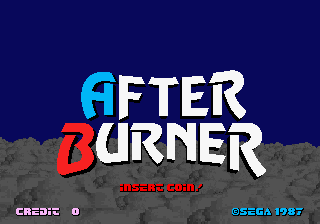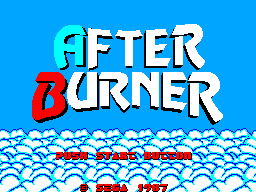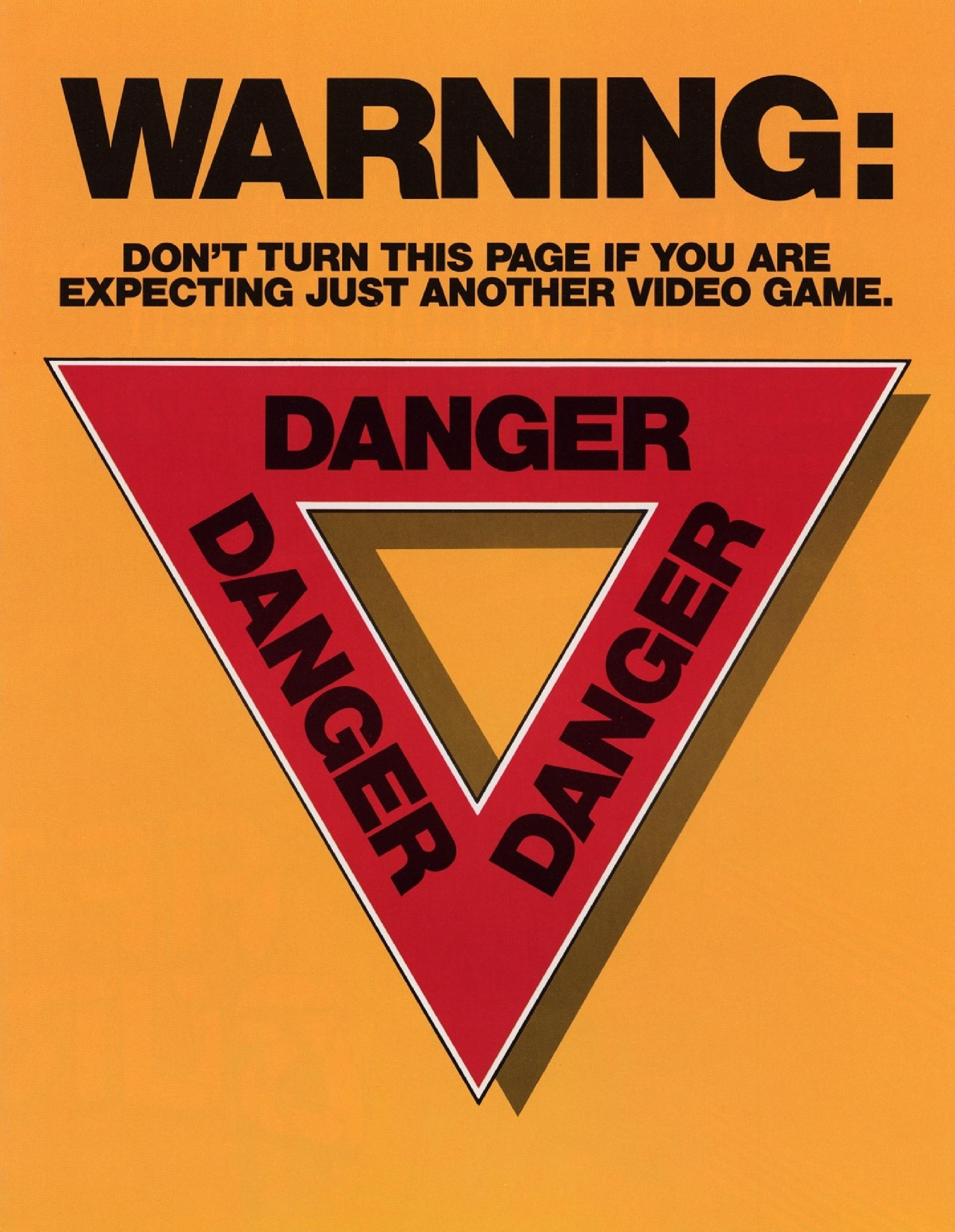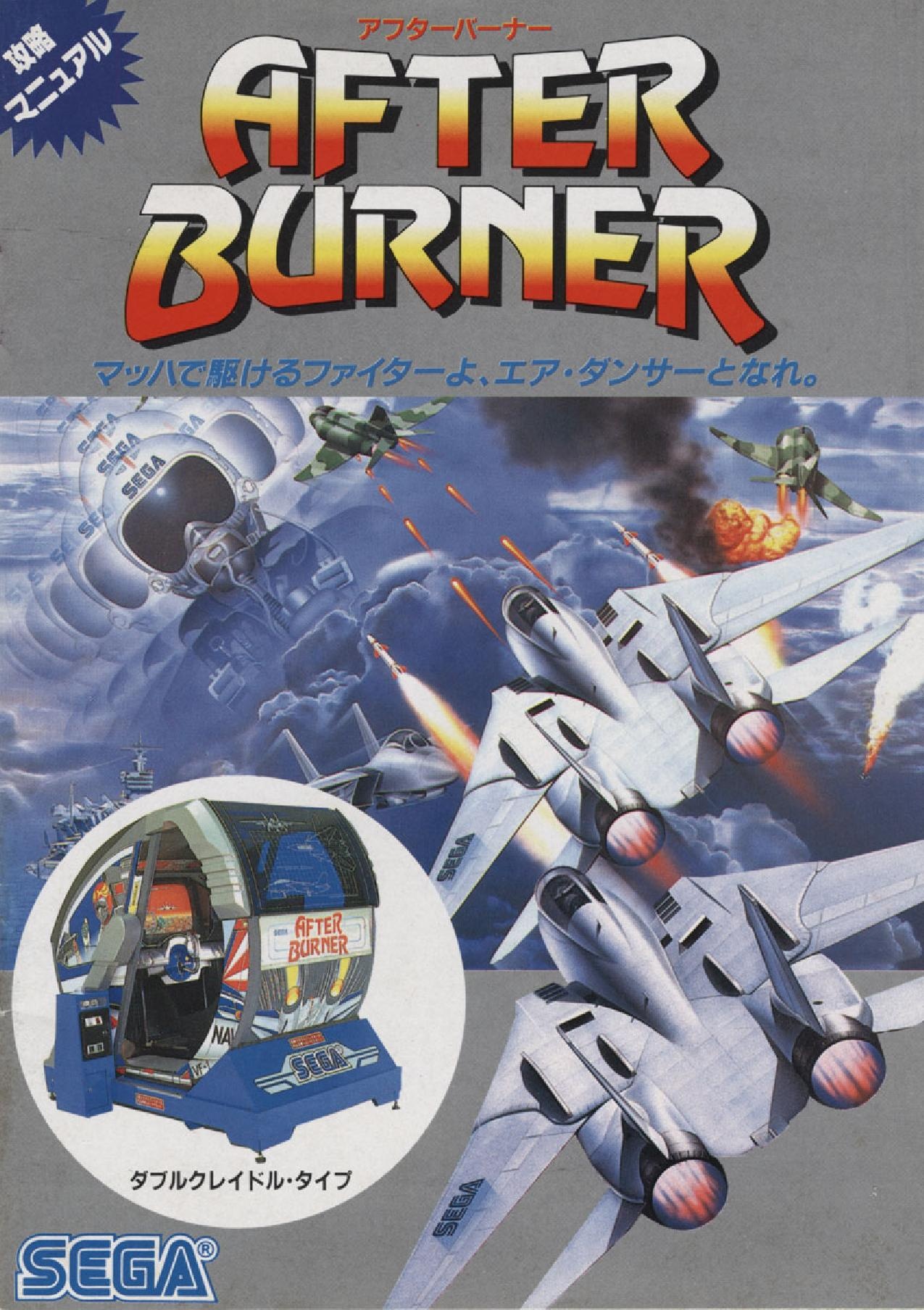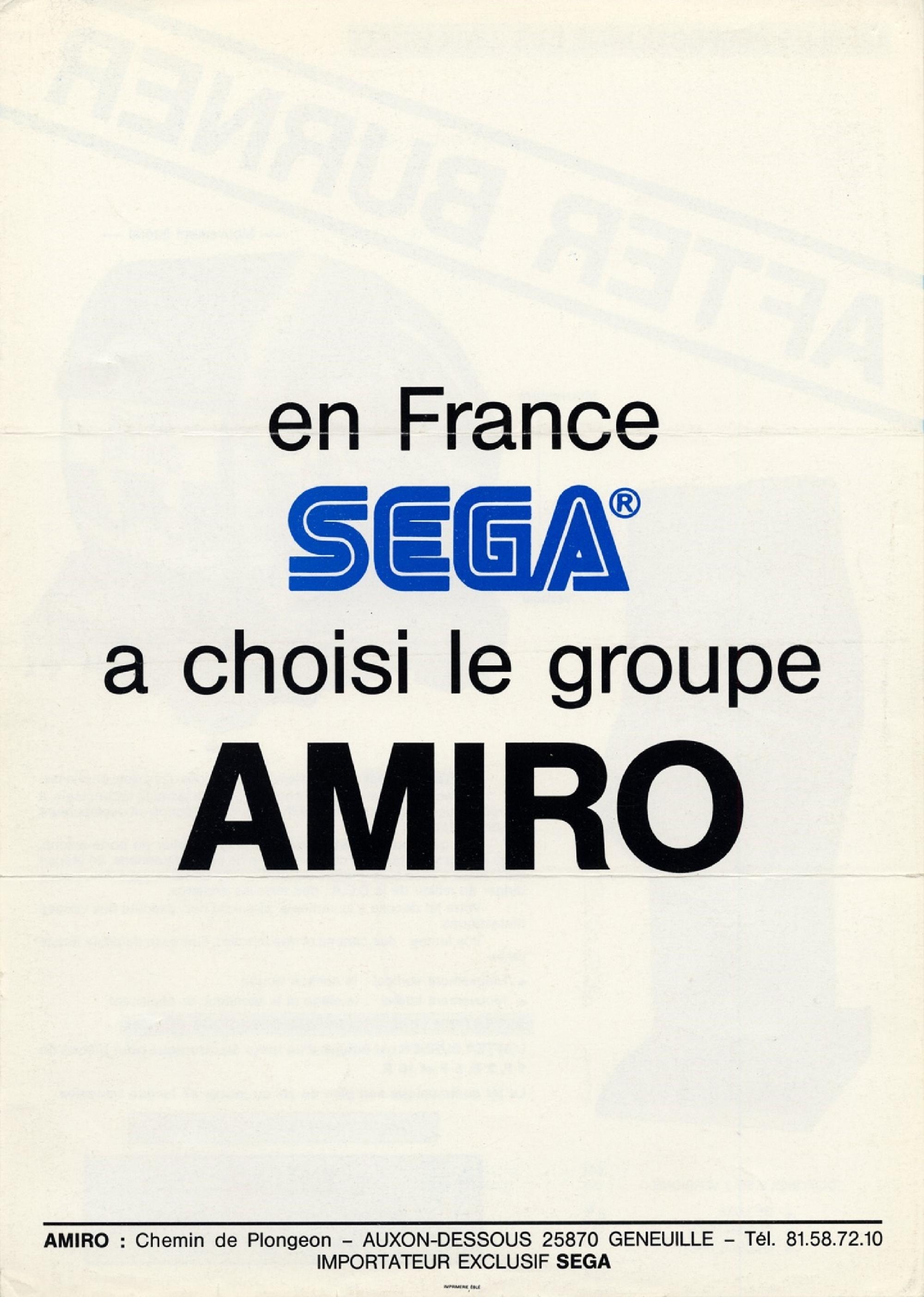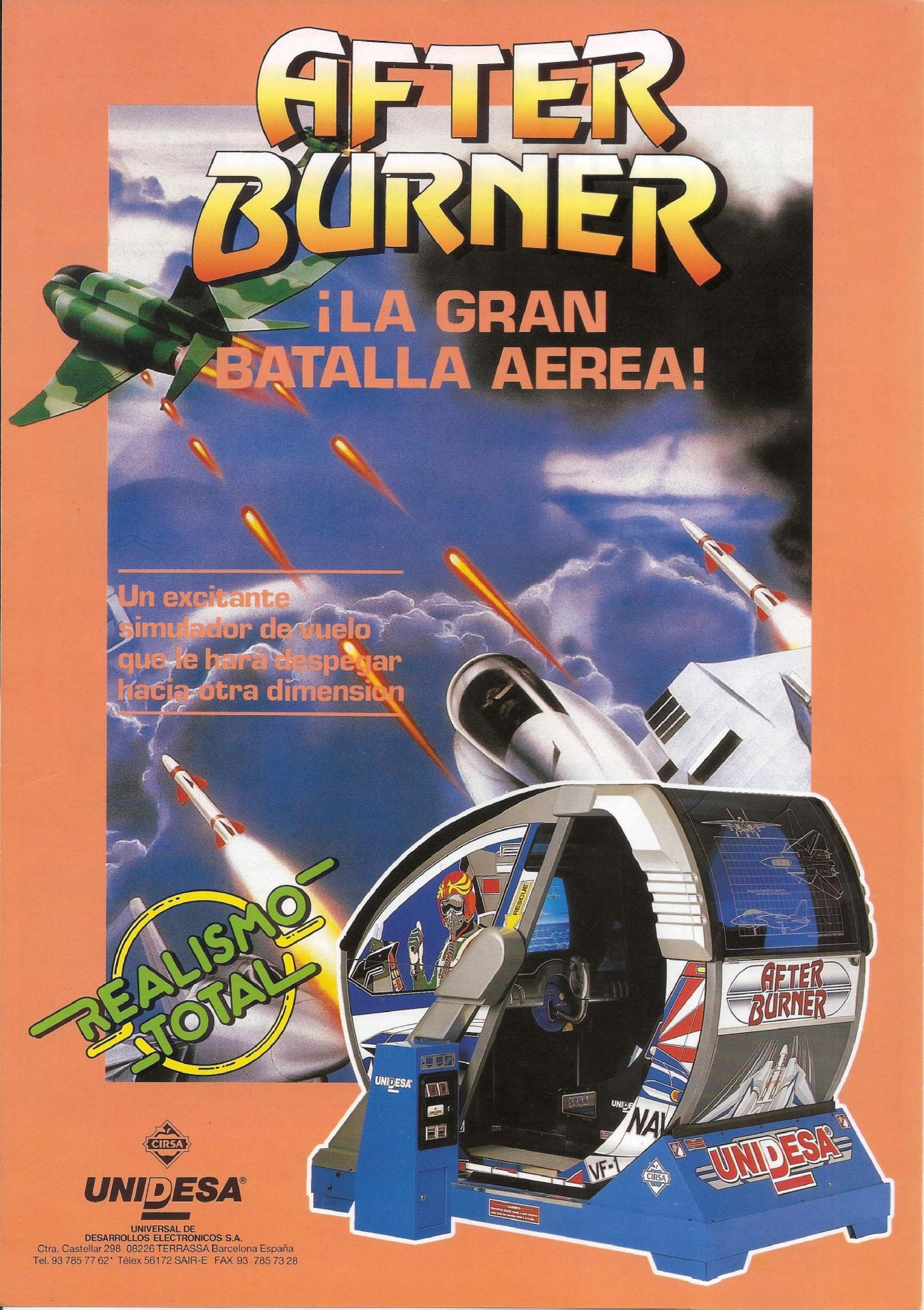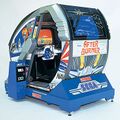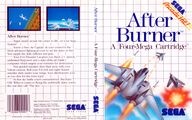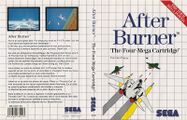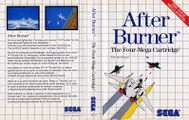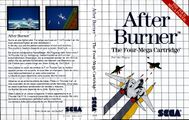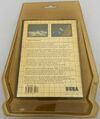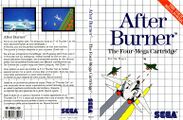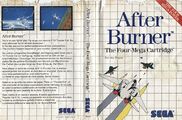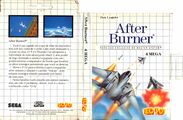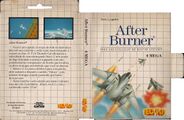Difference between revisions of "After Burner"
From Sega Retro
m (Text replacement - "| console=Master System | region=EU<br>"No Limits" variant" to "| console=Master System | region=EU<br>("No Limits")") |
m (Text replacement - "| region=EU<br>("No Limits")" to "| region=EU ("No Limits")") |
||
| Line 205: | Line 205: | ||
}}{{Scanbox | }}{{Scanbox | ||
| console=Master System | | console=Master System | ||
| − | | region=EU | + | | region=EU ("No Limits") |
| cover=AfterBurner SMS EU nolimits cover.jpg | | cover=AfterBurner SMS EU nolimits cover.jpg | ||
| manual=AfterBurnerSMSEUManual.pdf | | manual=AfterBurnerSMSEUManual.pdf | ||
Revision as of 10:06, 1 January 2021
- For Western home computer versions, see After Burner (home computers).
| ||||||||||||||||||||||||||||||||||||||||||||||||||||||||||||||||||
| After Burner | ||||||||||||||||||||||||||||||||||||||||||||||||||||||||||||||||||
|---|---|---|---|---|---|---|---|---|---|---|---|---|---|---|---|---|---|---|---|---|---|---|---|---|---|---|---|---|---|---|---|---|---|---|---|---|---|---|---|---|---|---|---|---|---|---|---|---|---|---|---|---|---|---|---|---|---|---|---|---|---|---|---|---|---|---|
| System(s): Sega X Board, Sega Master System | ||||||||||||||||||||||||||||||||||||||||||||||||||||||||||||||||||
| Publisher: Sega | ||||||||||||||||||||||||||||||||||||||||||||||||||||||||||||||||||
| Developer: Studio 128 Sega | ||||||||||||||||||||||||||||||||||||||||||||||||||||||||||||||||||
| Peripherals supported: FM Sound Unit | ||||||||||||||||||||||||||||||||||||||||||||||||||||||||||||||||||
| Genre: Shooting[1] | ||||||||||||||||||||||||||||||||||||||||||||||||||||||||||||||||||
| Number of players: 1 | ||||||||||||||||||||||||||||||||||||||||||||||||||||||||||||||||||
|
After Burner (アフターバーナー) is a third-person rail shooter arcade game designed by Yu Suzuki and developed by Studio 128, released for the Sega X Board system in 1987. The game was released in three variations: a standard upright cabinet, and two cockpit versions, one that tilts left and right, and one a rotating cockpit version. An updated version was released months later, After Burner II.
After Burner stands as one of Sega's most successful arcade games, building on the momentum started earlier in the decade with Hang-On, Space Harrier and OutRun. It was the first game to utilise Sega X Board technology, allowing for the easy scaling and rotation of in-game sprites, producing three-dimensional graphics. It is also remembered for its then-revolutionary sit-down cabinet design, complete with a horizontally rotating seat and a vertically rotating cockpit, controlled (like the game) by the integrated analog flight stick, with the cabinet's motion corresponding to the joystick's movement.
Its analog flight-stick controls moved in all directions and measured the degree of push, a precursor to the analog thumbsticks of the N64 and later consoles. After Burner's gameplay also featured a lock-on system, which was adopted by later rail shooters such as Sega's Panzer Dragoon and Rez[9].
Contents
Gameplay
In After Burner, the player pilots an F-14 Tomcat-inspired jet (named F-14 Thunder Cat in the Master System manual) through 18 levels, destroying enemies with machine gun fire and a limited supply of missiles. Similar to Space Harrier, it is an "on-the-rails" shooter - the plane will travel continuously into the screen, with players only able to adjust its X and Y coordinates.
The objective in After Burner is to survive through each of the 18 stages, usually by avoiding enemy missile fire, however "bonus" stages, which occur every six levels, require the player to dodge scenery and not crash. Shooting down enemies is technically optional, although alleviates the risk of being destroyed. The player has a limited supply of missiles which are refueled at various intervals throughout the game.
History
Development
After Burner began development in December 1986.[10] It was inspired by Yu Suzuki's real-life experience of personally piloting a real jet aircraft and participating in air combat when he visited Florida, United States:[11]
| “ | At first, after reading all the appropriate guides, they lectured us for a couple of hours, explaining everything. Afterwards, I got into a jet aircraft, and flew around with an instructor. The aircraft was equipped with a laser gun and smoke bombs. And there were two of us. If you hit the opponent, a smoke bomb activates, and that means he was shot. And we were flying around for about two hours shooting each other. [...] After that, I realized that all games about aircraft aren't interesting enough. ... Because in those it was much more difficult to control the aircraft than in real life. Seriously! And I realized something: all those flight simulators were created by people who hadn't even flown a real aircraft! | „ |
The game was also influenced by popular culture. Suzuki was originally inspired by Hayao Miyazaki's 1986 anime film Laputa: Castle in the Sky, and the game was going to have a similar steampunk sci-fi/fantasy theme. After watching the 1986 Hollywood film Top Gun, the team realized that the game needs to attract worldwide audiences, so they changed it to a more realistic theme with an F-14 fighter jet. The game was intended to start off in the Mediterranean and head towards Russia, but the team didn't have the time to scout out locations like they did for Out Run, so much of the scenery in After Burner ended up being imaginary. A major challenge when creating the game was sprite/texture rotation, researching how to rotate the surfaces of the sprites, which was a major milestone. Another major milestone was making the smoke trails from missiles look more realistic.[10]
After Burner was originally designed to have melodies play over the "After Burner/Red Out" and "Final Take Off" music tracks, but these were taken out of the final game, potentially through fears that they'd be drowned out in a busy arcade environment. Though these versions were never heard in the arcades, they adapted for the album Sega Game Music Vol. 3 After Burner in 1987 (appearing in other albums since), and have been brought back as options in later games (for example, 3D After Burner II). The melodies were also used for the FM Towns version released in 1989, in a remixed CD format.
Legacy
The original After Burner was released exclusively in Japan, however the western world would receive an updated version of the game, After Burner II in the months which followed. After Burner II is extremely similar in design, bar a few minor tweaks (such as a throttle control, extra levels and slight changes to the missile system), so much so that people often consider it to be a more "complete" version of After Burner than a direct sequel. Due to the similarities and shared cabinet designs and artwork, After Burner II is frequently confused for the original After Burner. A similar relationship would develop with Galaxy Force and Galaxy Force II, also produced by Sega AM2.
In its original form, After Burner was only ported to the Sega Master System (as the console's first four megabit game[12]), however many ports of After Burner II were released under the name of After Burner for home consoles and computers, including the Amiga (twice), Amstrad CPC, Atari ST, Commodore 64, IBM PC, FM Towns, MSX, PC Engine, X68000 and ZX Spectrum.
It was also ported to the Sega 32X by Rutubo Games and went under the name of After Burner Complete.
After Burner in its original form was also released as part of Sega Arcade Gallery for the Game Boy Advance.
After Burner has made appearances in popular culture. For example, it made an appearance in the 1991 film Terminator 2: Judgment Day.[10]
Production credits
X Board version
- Lead Developer / Lead Programmer: Yu Suzuki
- Programmer: Satoshi Mifune
- Composer: Hiroshi "Hiro" Kawaguchi
The arcade version of After Burner II has no detailed credits screen, but instead aliases of the developers are seen on the backs of clothing in the ending sequence:
Magazine articles
- Main article: After Burner/Magazine articles.
Promotional material
X Board version
Master System version
also published in:
- Computer & Video Games (UK) #77: "March 1988" (1988-02-15)[5]
Photo gallery
Merchandise
Physical scans
X Board version
| Sega Retro Average | ||||
|---|---|---|---|---|
|
| N/A | |
|---|---|
| Based on 0 reviews | |
| X Board, JP | ||||
|---|---|---|---|---|
Master System version
| Sega Retro Average | |||||||||||||||||||||||||||||||||||||||||||||||||||||||||||||||||||||||||||||||||||||||||||||||||||||||||||||
|---|---|---|---|---|---|---|---|---|---|---|---|---|---|---|---|---|---|---|---|---|---|---|---|---|---|---|---|---|---|---|---|---|---|---|---|---|---|---|---|---|---|---|---|---|---|---|---|---|---|---|---|---|---|---|---|---|---|---|---|---|---|---|---|---|---|---|---|---|---|---|---|---|---|---|---|---|---|---|---|---|---|---|---|---|---|---|---|---|---|---|---|---|---|---|---|---|---|---|---|---|---|---|---|---|---|---|---|---|---|
|
| 64 | |
|---|---|
| Based on 21 reviews | |
| Master System, GR (Zegetron) |
|---|
| <div style="margin:auto; max-width:Expression error: Unexpected < operator.px">
320x120px Cover
|
| Master System, GR (Zegetron) "No Limits" variant |
|---|
| <div style="margin:auto; max-width:Expression error: Unexpected < operator.px">
320x120px Cover
|
| Master System, GR (Zegetron) ® variant |
|---|
| <div style="margin:auto; max-width:Expression error: Unexpected < operator.px">
320x120px Cover
|
| Master System, KR |
|---|
|
Mega-Tech version
Technical information
ROM dump status
| System | Hash | Size | Build Date | Source | Comments | |||||||||
|---|---|---|---|---|---|---|---|---|---|---|---|---|---|---|
| ? |
|
512kB | Cartridge |
References
- ↑ 1.0 1.1 https://sega.jp/history/hard/mastersystem/software.html (Wayback Machine: 2019-12-31 02:27)
- ↑ http://sega.jp/fb/segahard/master/gallery.html
- ↑ Computer & Video Games, "November 1987" (UK; 1987-10-15), page 134
- ↑ Computer Entertainer, "April 1988" (US; 1988-04-16), page 07
- ↑ 5.0 5.1 Computer & Video Games, "March 1988" (UK; 1988-02-15), page 10
- ↑ 6.0 6.1 6.2 ACE, "April 1988" (UK; 1988-xx-xx), page 51
- ↑ 7.0 7.1 7.2 The Games Machine, "March 1988" (UK; 1988-02-18), page 54
- ↑ 8.0 8.1 Génération 4, "Eté 1988" (FR; 1988-0x-xx), page 20
- ↑ Retro Gamer, "xxxx xxxx" (UK; 20xx-xx-xx), page 28
- ↑ 10.0 10.1 10.2 10.3 After Burner II: Developer Interviews (Yu Suzuki, Satoshi Mifune, Hiroshi “Hiro” Kawaguchi, Ryu)
- ↑ Yu Suzuki Interview, Strana Igr, November 2013
- ↑ Computer Gaming World, "June 1988" (US; 1988-xx-xx), page 41
- ↑ Power Play, "Ausgabe 2" (DE; 1987-12-28), page 104
- ↑ Commodore User, "October 1987" (UK; 1987-09-xx), page 98-100 (98)
- ↑ Sinclair User, "April 1988" (UK; 1988-03-18), page 82/83 (82)
- ↑ 16.0 16.1 Aktueller Software Markt, "März 1988" (DE; 1988-02-19), page 41
- ↑ 17.0 17.1 Complete Guide to Consoles, "" (UK; 1989-10-16), page 47
- ↑ 18.0 18.1 Complete Guide to Consoles, "Volume IV" (UK; 1990-11-xx), page 89
- ↑ Computer & Video Games, "March 1988" (UK; 1988-02-15), page 122/123 (122)
- ↑ 20.0 20.1 Games Preview, "8/9 1989" (DK; 1989-xx-xx), page 67
- ↑ Génération 4, "Eté 1988" (FR; 1988-0x-xx), page 20/21 (20)
- ↑ 22.0 22.1 Power Play, "Ausgabe 3" (DE; 1988-02-22), page 91
- ↑ 23.0 23.1 Sega Power, "October 1991" (UK; 1991-09-05), page 40
- ↑ 24.0 24.1 Sega Power, "October 1991" (UK; 1991-09-05), page 55
- ↑ 25.0 25.1 Sega Pro, "November 1991" (UK; 1991-xx-xx), page 18
- ↑ The Complete Guide to Sega, "" (UK; 1991-05-xx), page 52
- ↑ Computer Action, "Juli/August 89" (DK; 1989-0x-xx), page 34
- ↑ Console XS, "June/July 1992" (UK; 1992-04-23), page 137
- ↑ Computer & Video Games, "March 1988" (UK; 1988-02-15), page 122
- ↑ Micromanía (segunda época), "Enero 1990" (ES; 19xx-xx-xx), page 27
- ↑ Mean Machines Sega, "October 1992" (UK; 1992-09-xx), page 132
- ↑ Sega News, "Říjen 1996" (CZ; 1996-xx-xx), page 27
- ↑ Sega Pro, "April 1993" (UK; 1993-03-11), page 70
- ↑ Software Gids, "Mei/Juni 1990" (NL; 1990-05-xx), page 31
- ↑ Tilt, "Mai 1988" (FR; 1988-0x-xx), page 100
| After Burner | |
|---|---|
|
Main page | Comparisons | Credits | Hidden content | Development | Magazine articles | Reception | Merchandise
Music: After Burner (1990) Videos: After Burner (1987) | After Burner (1987) | |
- FM Sound Unit-compatible games
- 1 player games
- All arcade games
- X Board games
- 1987 X Board games
- All 1987 games
- Mega-Tech games
- Unknown year games
- JP Master System games
- All JP games
- US Master System games
- All US games
- EU Master System games
- All EU games
- FR Master System games
- All FR games
- UK Master System games
- All UK games
- GR Master System games
- All GR games
- AU Master System games
- All AU games
- BR Master System games
- All BR games
- KR Master System games
- All KR games
- Master System games
- 1987 Master System games
- Master System shoot-'em-up games
- All shoot-'em-up games
- All games
- Quote with no reference
- Credits without reference
- Old-style rating (pp)
- Old-style rating (cuser)
- Old-style rating (suser)
- Update ratings template
- 3 old ratings
- No ratings
- Old-style rating (ace)
- Old-style rating (asm)
- Rating without source
- Old-style rating (cgtc)
- Old-style rating (cvg)
- Old-style rating (gamesmachineuk)
- Old-style rating (gamespreview)
- Old-style rating (gen4)
- Old-style rating (micromania2)
- Old-style rating (segapower)
- Old-style rating (segapro)
- Old-style rating (tilt)
- 14 old ratings
- Pages with broken file links
- Old technical information
- After Burner
- After Burner (franchise)
